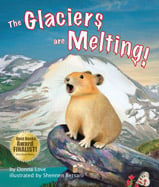Alignment to Standards for WI

| Grade | Number | Standard |
|---|---|---|
| K-4 | EE-.4.2 | Apply ideas of past, present, and future to specific environmental issues (see SC connections) |
| K-4 | EE-B.4.6 | Cite examples of how different organisms adapt to their habitat* |
| K-4 | EE-C.4.1 | Identify environmental problems and issues (see SS Political Science and Citizenship: Power, Authority, Governance, and Responsibility) |
| K-4 | EE-E.4.2 | personal actions impact their civic responsibilities toward the environment (see SS Political Science and Citizenship: Power, Authority, Governance, and Responsibility) |
| K-4 | SC-D.4.4 | changes in form, temperature, color, speed, and direction of objects and construct explanations for the changes |
| K-4 | SC-E.4.1 | Investigate that earth materials are composed of rocks and soils and correctly use the vocabulary for rocks, minerals, and soils during these investigations |
| K-4 | SC-E.4.3 | Develop descriptions of the land and water masses of the earth and of Wisconsins rocks and minerals, using the common vocabulary of earth and space science |
| K-4 | SC-E.4.7 | Using the science themes, describe resources used in the home, community, and nation as a whole |
| K-4 | SC-F.4.1 | Discover how each organism meets its basic needs for water, nutrients, protection, and energy* in order to survive |
| K-4 | SC-F.4.4 | the connections among living and non-living things in various environments |
| K-4 | SS-A.4.1 | Use reference points, latitude and longitude, direction, size, shape, and scale to locate positions on various representations of the earth's surface |
| K-4 | SS-A.4.2 | Locate on a map or globe physical features such as continents, oceans, mountain ranges, and land forms, natural features such as resources, flora, and fauna; and human features such as cities, states, and national borders |